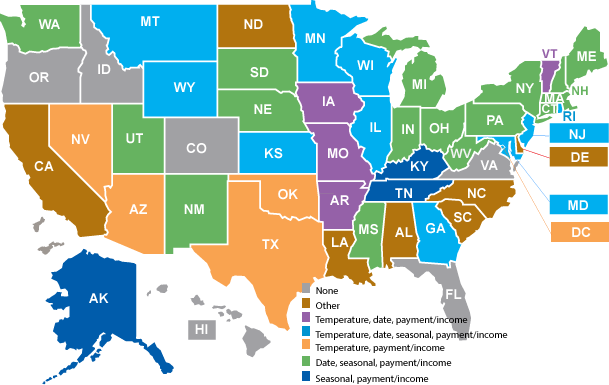AARP Hearing Center
Utility Service Should Not Be a Candle in the Wind
By Ann Jackson, May 4, 2015 11:43 AM

An old proverb says “it is better to light a single candle than to curse the darkness.” With apologies to the author, it is just better to keep the lights on.
Utility service is essential to preserving the health and well-being of families and individuals. Certainly the ability to adequately heat and/or cool their homes is essential to the health and well-being of most households. Most states require government-regulated utilities to observe dates and seasons during which disconnections are not allowed, and/or temperatures below or above which utilities must maintain service.
Most states also require utilities to offer winter or year-round protections to households with members who are vulnerable, ill, suffering a medical emergency, or dependent on medical equipment. But these protections are demonstrably not enough, and fail to protect millions of customers across the United States from service terminations and their consequences.
Date, Seasonal, Temperature and Other Disconnection Protections, by State

LIHEAP Clearinghouse: State Disconnection Policies, www.liheapch.acf.hhs.gov/Disconnect/disconnect.htm
Keeping the power, water or gas on is not just a winter, summer or health issue, but an issue of year-round affordability. There is no formal national count of disconnections, but state after state reports rising numbers of disconnections as consumer spending on utilities continues to increase. For example, seasonal protections notwithstanding, AARP and the Public Utility Law Project (PULP) report that over just the first four months of 2014, one New York utility issued over 100,000 shut-off warnings to customers. PULP reports that by May 2014, more than 1 million residential customers of investor-owned utilities in New York were 60 or more days in arrears and owed more than $900 million. PULP estimates that each year in New York, more than 250,000 customers have service terminated as a collection measure. And New York is hardly a special case.
Disconnections are bad for customers, utilities and states. The use of service terminations as a collection tool for unaffordable utility bills is counterproductive as it undermines customer welfare and negatively affects the financial health of the utilities themselves.
For customers, termination of any utility service can cause significant harm to health, dignity and financial security and has been identified as a factor in homelessness, illness, even death. Loss of service may hold especially dire consequences for people who may not be able to withstand extreme heat or cold, or changes in nutrition, location and lifestyle caused by lack of service. And disconnecting and then reconnecting service to customers does not subtract from a utility’s costs, but adds to them.
Yet utility providers often do not make it easy for customers to resume service. Households already struggling to pay the current bill, plus arrears, must also come up with a sizable security deposit and various fees before service is reconnected. Some utilities also block the ability of customers to negotiate new service while paying off their balances.
To stem the rising tide of service terminations, utilities must do a better job of making service truly affordable for all. This includes the following:
- Providing information about available services and programs including the federally funded Low Income Home Energy Assistance Program (LIHEAP) and available weatherization assistance programs;
- Offering percent of income payment plans (payment arrangements in which utilities accept payments based on a percentage of the household’s income);
- Offering budget billing (which absorb some of the volatility of utility costs at certain times of the year and requires a level payment based on 11-12 months of prior usage);
- Offering level payment plans (where the customer retains service by paying the current bill in full and a portion of the arrears each month);
- Allowing arrearage forgiveness in return for partial payment of the arrears balance;
- Developing realistic payment options when disconnections occur;
- Ensuring that residential customers pay rates that reflect only their fair share of costs associated with utility-initiated investments and procedural and equipment changes;
- Prohibiting utility companies from preventing customers’ ability to switch providers if they hold outstanding debt, in states where customers can pick their own electric suppliers.
AARP supports consideration of a universal energy service policy that not only embraces affordable rates for all customers, but acknowledges that even reasonable rates may be unaffordable for some households.
Not to knock candles, but in 2015 they should be more for scent and ambiance than for replacing utility service.
































































